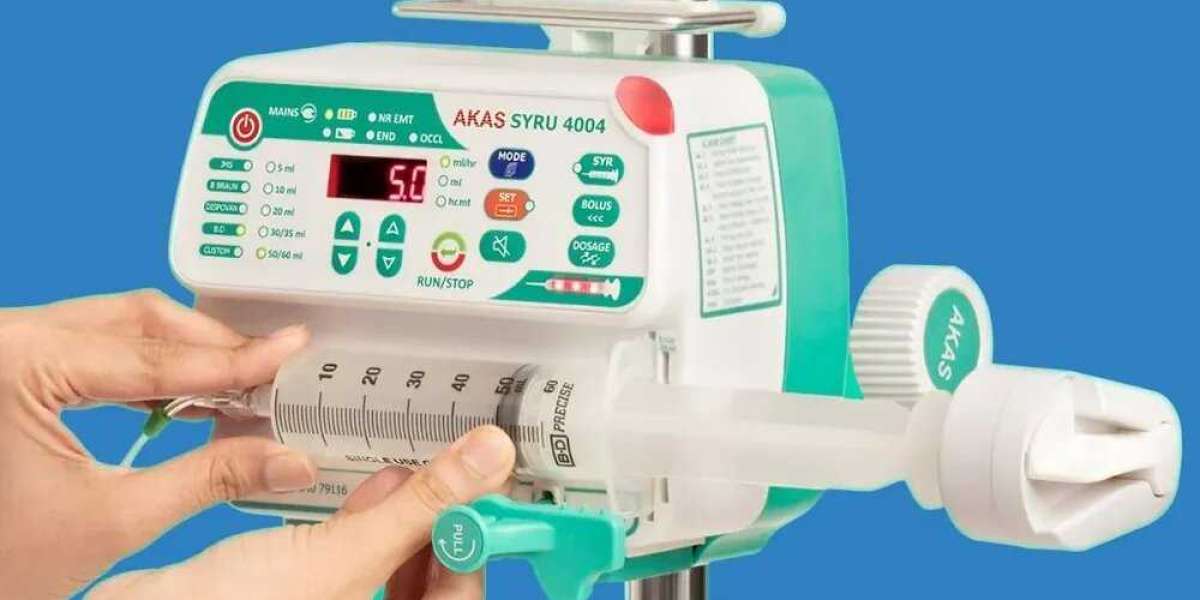Introduction
- Syringe pumps are essential in modern healthcare, ensuring precise medication administration.
- Choosing between manual and smart syringe pumps impacts patient safety and workflow efficiency.
- Understanding their differences helps healthcare providers make informed decisions for optimal care.
What Are Manual Syringe Pumps?
- Manual syringe pumps require healthcare professionals to set infusion parameters manually.
- These devices operate with basic mechanical controls, allowing simple rate adjustments.
- They are commonly used in controlled environments where real-time monitoring is unnecessary.
Benefits of Manual Syringe Pumps
- Cost-Effective: Lower upfront investment compared to smart syringe pumps.
- Simple Operation: User-friendly design with minimal training required.
- Reliable in Power Outages: Can function without electricity or battery dependency.
Limitations of Manual Syringe Pumps
- Higher Risk of Human Error: Manual input increases the likelihood of incorrect dosing.
- Limited Precision: Lack of advanced technology may result in minor infusion inconsistencies.
- No Automated Safety Features: Does not include alarms or real-time monitoring.
What Are Smart Syringe Pumps?
- Smart syringe pumps are technologically advanced devices designed for precise medication delivery.
- They integrate digital controls, dose error reduction software, and real-time monitoring.
- These pumps are commonly used in ICUs, neonatal care, and critical patient treatments.
Benefits of Smart Syringe Pumps
- Enhanced Patient Safety: Automated alarms alert staff to infusion irregularities.
- Greater Accuracy: Advanced sensors ensure precise drug administration.
- Remote Monitoring Capabilities: Allows healthcare providers to track infusions in real-time.
Limitations of Smart Syringe Pumps
- Higher Cost: More expensive than manual syringe pumps due to advanced technology.
- Training Requirement: Staff must be trained to operate and troubleshoot digital interfaces.
- Power Dependency: Requires battery or electrical power, making backup plans necessary.
Comparing Manual and Smart Syringe Pumps
Feature | Manual Syringe Pump | Smart Syringe Pump |
Cost | Lower | Higher |
Accuracy | Moderate | High |
Safety Features | Minimal | Advanced |
Monitoring | Manual Supervision | Automated Alerts |
Training Needed | Minimal | Extensive |
Power Requirement | None | Battery/Electric |
Which Syringe Pump Is Best for Your Hospital?
- For Low-Risk Environments: Manual syringe pumps offer affordability and reliability.
- For High-Risk or Critical Care: Smart syringe pumps provide enhanced safety and precision.
- Budget Considerations: Hospitals must weigh cost against patient safety and operational efficiency.
Conclusion
- Syringe pumps play a crucial role in delivering medications safely and efficiently.
- Choosing between manual and smart syringe pumps depends on patient needs and hospital resources.
- Akas Infusion manufactures world-class drug delivery devices like volumetric pumps, ensuring precision and reliability in medical care.




